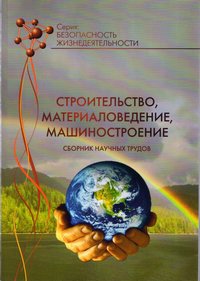Environmental factor in land plots distribution for residential construction
DOI:
https://doi.org/10.30838/P.CMM.2415.250918.156.145Keywords:
and technogenic pollution, residential construction, maximum allowable norms, procedure of allocation, pricing factors, GIS-technologiesAbstract
Purpose. To substantiate the procedure of ensuring environmental safety of land plots for residential construction. Method. Analysis of the state of land for the purpose of technogenic pollution, graph-analytical method and method of geometrization. Method of mapping the territory where land is located with unfavorable conditions for people's stay and residence. Application of GIS technologies to visualize the zoning of the territory of the Dnipro in terms of technogenic contamination. Results. Most of the allocated land for residential development as a result of industrial pollution of the territory of industrial cities does not meet the environmental requirements and are harmful, and sometimes unsuitable for people's residence. Technogenic pollution occurs as a result of exceeding the maximum allowable noise levels near residential neighborhoods, the intensity of electromagnetic fields and the radiation background The environmental factor should be one of the most important when shaping the price of the land and enginee ring objects (buildings and structures) that are located on it. The ecological state of the land in the city of Dnipro has been analyzed and the most favorable places for inhabitants with the permissible indicators of pollution have been identified. The procedure fo r allocating a land plot for construction and the influence of price-forming factors on its cost is given. Scientific novelty. It is proposed together with the construction permit to issue information on the environmental condition of the land plot allocated for buil ding. Depending on the indicator of pollution, to set the value of the land and regulate its taxation accordingly. Practical meaningfulness.Allocation for residential development of environmentally friendly land plots will increase the safety of life of large industrial cities and reduce the incidence of people.
References
Zarubezhnyy opyt vzimania zemelnogo naloga na primere Frantsii, Germanii i Italiikst dlya perevoda [Foreign experience of collecting land tax on the example of France, Germany and Italy]. Available at: http://www.grsailors.ru/salegs-532-2.html (in Russian)
Verkhovnа Radа Ukrainy. Zemelnyi Kodeks Ukrainy [Land Code of Ukraine]. Kyiv, 2018,121 p. Available at: http://zakon.rada.gov.ua/laws/show/2768-14. (in Ukrainian)
Zmistovna kharakterystyka potentsialu pidpryiemstva. Tema 6. Otsiniuvannia vartosti zemelnoi dilianky, budivel i sporud. [A meaningful description of the potential of the enterprise. Topic 6. Estimation of the cost of land, buildings and structures]. Available at: https://bookss.co.ua/book_zmistovna-harakteristika-potencialu-pidpriyemstva_912/8_tema-6.ocinyuvannya-vartosti-zemelnodilyanki-budivel-i
Kryshtop Ye.A. and Voloshchenko V.V. Miski grunty yak nevidiemnyi element urbanizovanykh i tekhnohenno zabrudnenykh terytorii [Urban soils as an integral part of urbanized and technogenically polluted areas]. Visnyk KhNAU [Bulletin of KhNAU]. KhNAU. Kharkiv, 2013, no 2, pp. 200-206. (in Ukrainian).
Levytskyi I.Yu. and Rychak N.L. Stan dovkillia mist: problemy, yoho otsinka ta kartohrafuvannia [Environmental condition of cities: problems, estimation and mapping]. Visnyk Kharkivskoho natsionalnoho universytetu imeni V.N. Kazarina [Bulletin of Kharkiv National University named after VN Kazarina]. KNU. Kharkiv, 2008, no. 801, pp. 27-36. (in Ukrainian).
Prokachyeva V.H. and Usachyev V.F. Tehnogenno zagryaznyaemyie zemli po gosudarstvam i kontinentam (statisticheskaya otsenka) [Technologically polluted land by state and continent (statistical evaluation). Saint Petersburg: «Peace and Family», 2002, 41 p. (in Ukrainian).
Rudko H.I. and Hoshovskyi S.V. Ekolohichna bezpeka tekhnopryrodnykh heosystem (naukovi i metodychni osnovy) [Ecological safety of techno-natural geosystems (scientific and methodological bases)]. Kyiv: CJSC «Nichlava», 2006, 466 р.
Sokolovskaya A.V. Kosmіchnyi monіtorynh ekolohіchnoho stanu mіskykh terytorіi (na prykladі mіsta Kyieva) [Space monitoring of the ecological condition of urban areas (for example, the city of Kiev)] Kosmіchna nauka і tekhnolohіia [Space science and technology]. 2013. no 4, pp. 44–49. Available at: ftp://ftp.mao.kiev.ua/pub/journals/knit/2013-19/knit-2013-19-4-05-sokolovska.pdf (in Ukrainian).
Stan navkolyshnoho pryrodnoho seredovyshcha Ukrainy [The state of the natural environment of Ukraine.]. Available at: http://pidruchniki.com/1640011656680/ekologiya/stan_navkolishnogo_prirodnogo_seredovischa_ukrayini
Stan povіtria v tochtsі [Air condition at the point] Available at: https:// https://ecoinfo.pro/site/any_points
Tіtenko H. V. Otsіnka ekolohіchnoho stanu mіskykh gruntіv yak zasіb optymіzatsіi terytorіi mіsta [Assessment of the ecological status of urban soils as a means of optimizing the city's territory]. Vіsnyk SumDU [Bulletin of SumDU]. 2007. no 275, pp. 149–152.
Khokhriakova A. I. Grunty mіst: osoblyvostі henezysu, klasyfіkatsіi ta dіahnostyky. [Soils of the city: features of genesis, classification and diagnostics.] Vіsnyk ONU.Heohrafіchnі ta heolohіchnі nauky [Visnyk ONU. Geographical and geological sciences]. 2016. no. 1, pp. 110-125. Available at: http://visgeo.onu.edu.ua/article/viewFile/90336/86051
Kolesnik, V.Ye., Borysovs'Ka, O.O., Pavlychenko, A.V. and Shirin, A.L. Determination of trends and regularities of occurrence of emergency situations of technogenic and natural character in Ukraine. Naukovyi Visnyk Natsionalnoho Hirnychoho Unive rsytetu [Scientific bulletin of National Mining University]. 2017, no 6, pр. 124-131.
Downloads
Published
Issue
Section
License
Редакція Видання категорично засуджує прояви плагіату в статтях та вживає всіх можливих заходів для його недопущення. Плагіат розглядається як форма порушення авторських прав і наукової етики.
При виявлені у статті більш ніж 25% запозиченого тексту без відповідних посилань та використання лапок, стаття кваліфікується як така, що містить плагіат. У цьому випадку стаття більше не розглядається редакцією, а автор отримує перше попередження.
Автори, в статтях яких повторно виявлено плагіат, не зможуть публікуватися в усіх журналах Видавництва ДВНЗ «Придніпровська державна академія будівництва та архітектури».
Автори, які публікуються у цьому журналі, погоджуються з наступними умовами:
- Автори залишають за собою право на авторство своєї роботи та передають журналу право першої публікації цієї роботи на умовах ліцензії Creative Commons Attribution License, котра дозволяє іншим особам вільно розповсюджувати опубліковану роботу з обов'язковим посиланням на авторів оригінальної роботи та першу публікацію роботи у цьому журналі.
- Автори мають право укладати самостійні додаткові угоди щодо неексклюзивного розповсюдження роботи у тому вигляді, в якому вона була опублікована цим журналом (наприклад, розміщувати роботу в електронному сховищі установи або публікувати у складі монографії), за умови збереження посилання на першу публікацію роботи у цьому журналі.
- Політика журналу дозволяє і заохочує розміщення авторами в мережі Інтернет (наприклад, у сховищах установ або на особистих веб-сайтах) рукопису роботи, як до подання цього рукопису до редакції, так і під час його редакційного опрацювання, оскільки це сприяє виникненню продуктивної наукової дискусії та позитивно позначається на оперативності та динаміці цитування опублікованої роботи (див. The Effect of Open Access).

